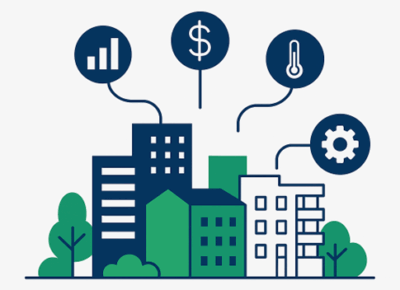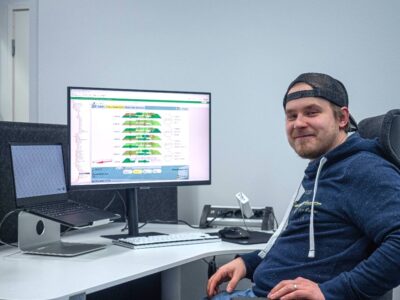Smart automation brings intelligence to every square metre of the superblock
A superblock is like a small city: multiple buildings, different needs, shared energy production. But how do you manage energy, indoor conditions, and costs when the block is made up of several properties and shared systems? How do you measure, who pays, and how do you ensure the users are comfortable? Not a small task, but with a well-designed building automation system, the challenges can be solved.
Energy, conditions, and operation
 After capital costs, energy is one of the biggest expenses in a block. But it is also one you can influence. In Finland, the climate constantly presents new challenges, but building services and the physical structures are designed to overcome them. In a superblock, energy is not managed building by building, but as a whole.
After capital costs, energy is one of the biggest expenses in a block. But it is also one you can influence. In Finland, the climate constantly presents new challenges, but building services and the physical structures are designed to overcome them. In a superblock, energy is not managed building by building, but as a whole.
The problem in a traditional block is that each building often has its own systems and maintenance. If the buildings do not communicate, energy use cannot be optimised effectively. Poorly managed operations can undermine even the best plans: energy efficiency suffers, and users complain about the indoor quality. The aim should be to balance consumption and production across the block as automatically as possible, without compromising indoor conditions anywhere.
How do you make the system work?
It all starts with project planning. The plan must define how energy is produced, measured, and shared between the buildings. Metering is at the heart of it because these must track both individual devices and entire systems. Demand response, such as reducing heating with heat pumps when electricity prices peak, requires accurate data and control. If metering does not work, costs cannot be allocated properly, and flexibility is impossible. Too often, metering accuracy is not verified, or the metering system as a whole is not properly designed. This needs to be addressed in the commissioning process. It is also worth running different demand response profiles during commissioning to verify flexibility performance and make market participation easier.
 A central building automation system monitors and controls energy use, maintains good indoor conditions, and adapts when needed. Self-generated energy, such as from solar panels, should be used first, with any additional energy purchased from the grid. Automation also ensures that empty spaces are not unnecessarily heated or cooled. This requires comprehensive sensors and smarter control solutions than traditional systems offer. It is an investment that will deliver savings and benefits for years to come.
A central building automation system monitors and controls energy use, maintains good indoor conditions, and adapts when needed. Self-generated energy, such as from solar panels, should be used first, with any additional energy purchased from the grid. Automation also ensures that empty spaces are not unnecessarily heated or cooled. This requires comprehensive sensors and smarter control solutions than traditional systems offer. It is an investment that will deliver savings and benefits for years to come.
Equipment choices must also be made carefully. Key equipment should support the needs of the whole block, which requires collaboration and commitment from designers and contractors. It is best to involve the automation supplier from the start, so that IT infrastructure, metering, and equipment choices all work together to enable centralised control and monitoring.
Collaboration is at the heart of the block
In the end, building automation for a superblock is not just about technology, but about how people work together. When the different parties commit to a shared goal from start to finish, you create more than a technically functional block. You build a community that stands the test of time, saves energy, and serves its residents in the best possible way.
 Ilkka Kasari
Ilkka Kasari
Energy Specialist
JIS-Automation Oy